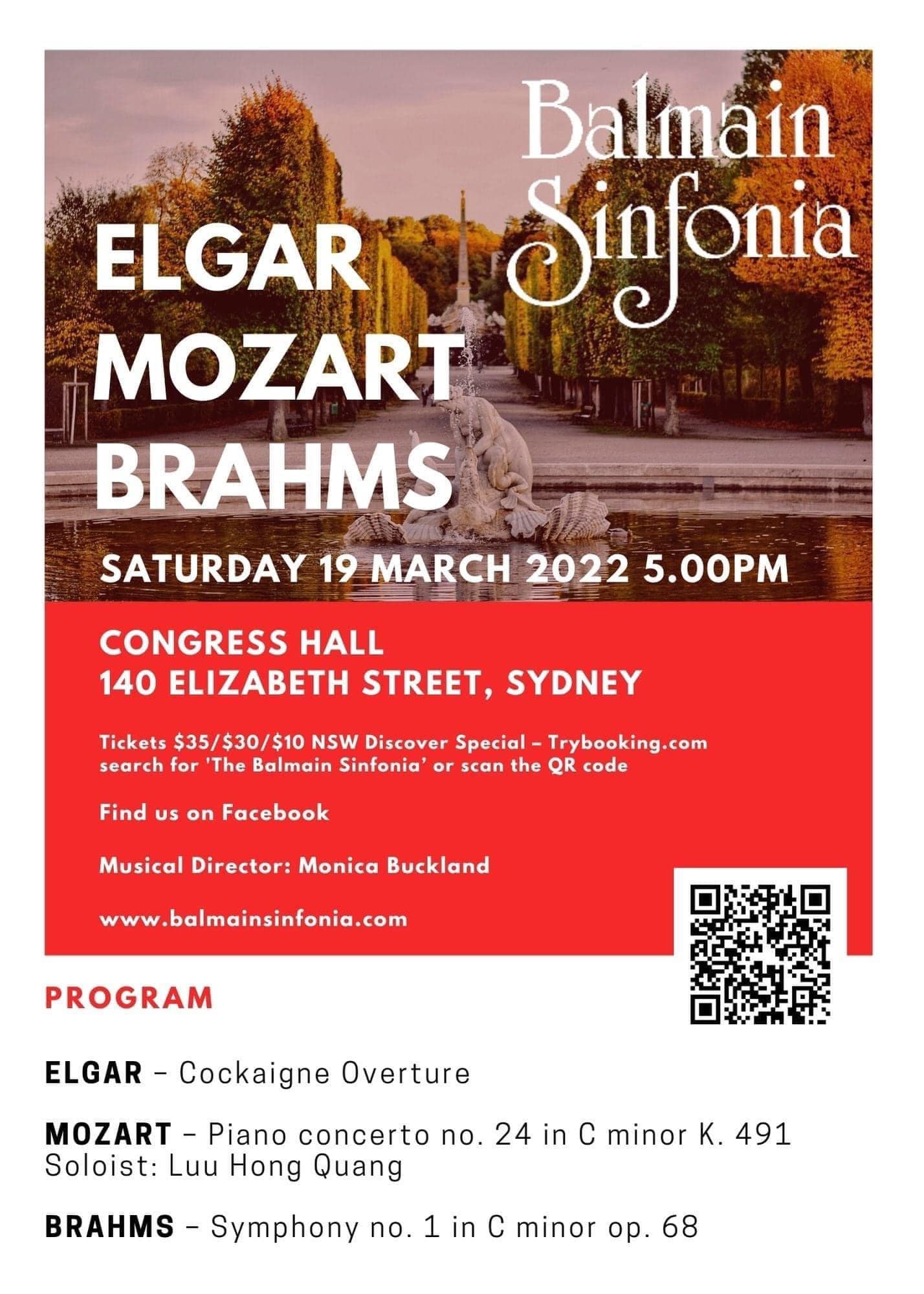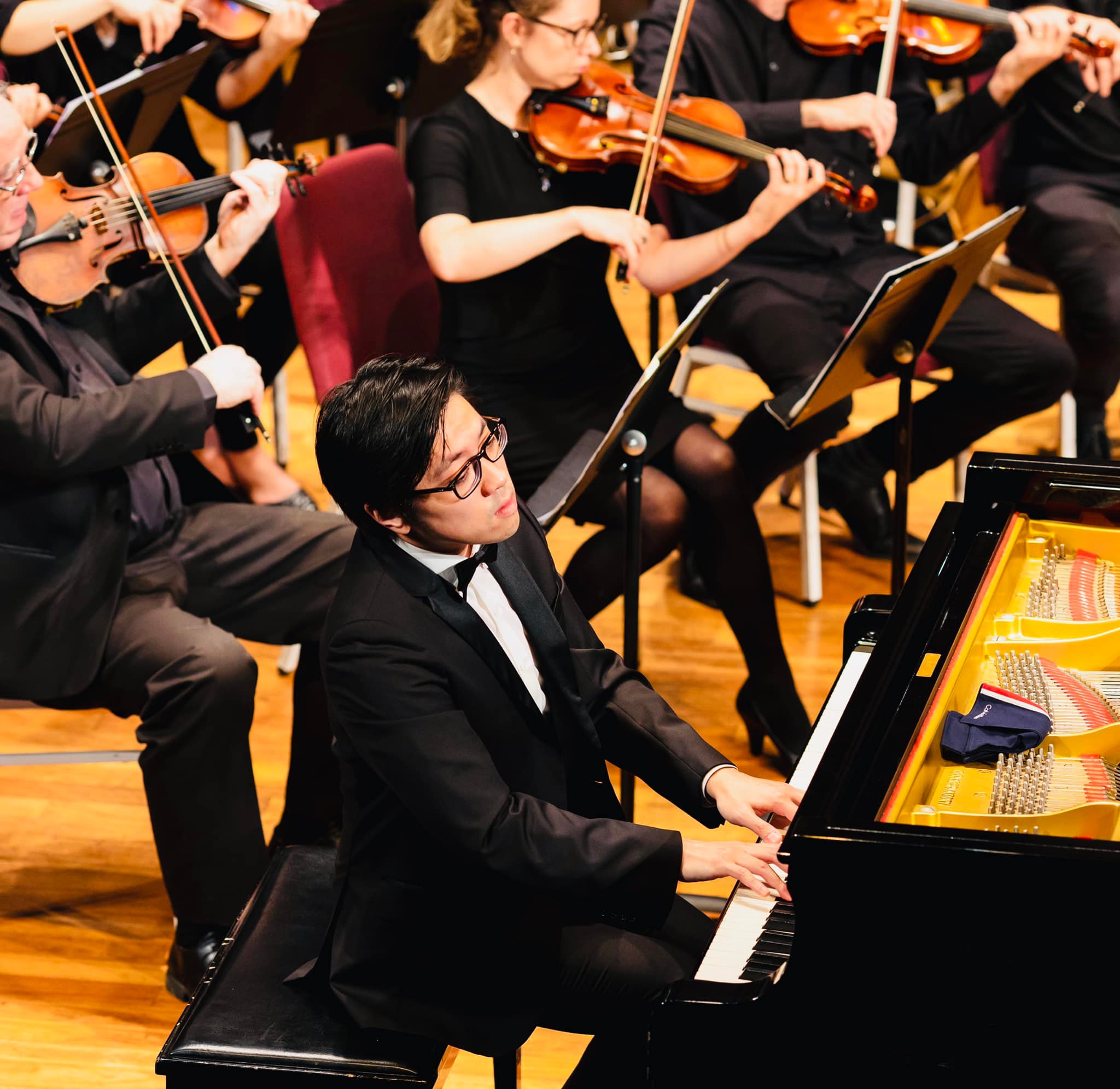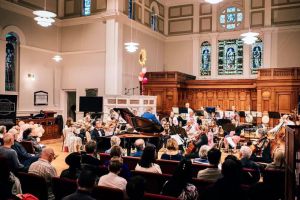Balmain Sinfonia | Elgar, Mozart, Brahms | 19 March 2022, Congress Hall, Sydney
The Balmain Sinfonia, like its sister provincial orchestra in Willoughby has improved in leaps and bounds. I’m told that the previous ‘creaky strings’ were due not to the quality of the performers but to that of the instruments, so hopefully they have fallen on better times of late. Gary Stavrou, the orchestra’s conductor for the past 28 years has recently taken a backstage role and his hard work has been taken over by Monica Buckland, a highly-acclaimed European conductor.
The concert began with Elgar’s Cockaigne Overture – the word originally meant ‘a land of milk and honey’ but in the 19th century came to mean London (the term “Cockney” surprisingly has a different origin taken from a cock’s egg!). Elgar must have been in a spritely mood when he wrote this work as it is full of fanfares and expansive chords with his signature imperialism. The three percussionists have a great time and even the tambourine makes a rare appearance near the conclusion. A rising start to the programme.

Elgar, Mozart, Brahms Concert at Congress Hall, Sydney
Many rate Mozart’s Piano Concerto no 24 in C minor as his finest and I am among them. A dramatically sad theme is fully developed by the orchestra before the piano enters with a related but lighter exposition while the movement develops with intimate dialogue featuring in particular the woodwind section which is prominent throughout the work. Mozart used trumpets in this Concerto for the first time. A rather laid back Larghetto features two more involved episodes but reverts to the original theme. The Finale is a theme and variations which sticks faithfully to the main idea even when changing rhythm just after the cadenza, similar to an episode in his other minor key concerto, but only lasting a few bars.
Two points of interest about this work:
- The pianist added embellishments to the Larghetto score as is often done these days. Is it authentic? Well, Mozart left gaps in the score thought to be for this purpose and he reportedly filled in with “Ad libs” himself.
- We had an unusual cadenza for the Finale which was rather sombre and remote. It was apparently written by none other than Andreas Schiff, the much-decorated Hungaro-British pianist

Pianist Luu Hong Quang performed at the Concert
I had not heard the soloist Luu Hong Quang before though he has won numerous awards including first prize at the Sydney Kawaii piano competition. Very composed and accurate and he seemed to be a real Mozart aficionado. He also regaled us with a long Cadenza, ‘Vision’ by Lizst, which suited the sad nature of the preceding Concerto. A lasting impression as a brilliant, discerning and empathetic performer.
After the break we heard Brahms’ 1st Symphony famously composed over a 14 year period. The first chords are assertive and dissonant but they resolve into an ordered format with two themes emerging. An elegiac Andante is followed by an Intermezzo which melds into the Finale via calls on horn and trombone. The Finale is famous for its main theme – Brahms said, ‘any Donkey could hear the Ode to Joy in this stanza’.
Well I’m not a donkey, but I could never detect the resemblance until it was pointed out to me! The rhythm is completely different! Nevertheless an impressive and absorbing work typical of the composer’s style.
Being held in the audience-friendly Congress Hall in the City, this was a great concert beautifully programmed and performed. Barring the brass losing its way in the Brahms Intermezzo, the orchestra, under its new conductor was impressive and I look forward to other programmes on the horizon.
Tony Burke




